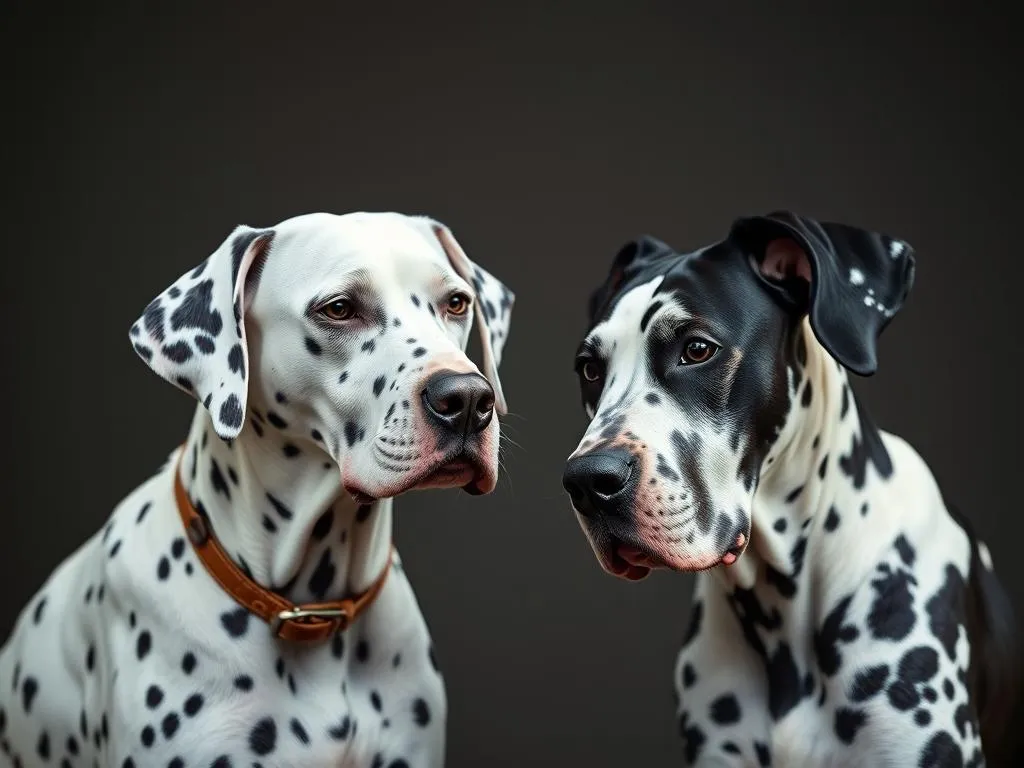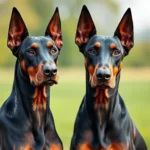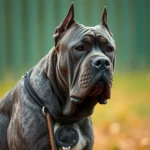
Introduction
When it comes to choosing a dog, understanding the distinct traits of different breeds is essential. The Dalmatian vs Great Dane comparison is particularly intriguing, as both breeds are well-loved and boast unique characteristics. Selecting the right dog for your lifestyle and preferences can significantly impact your experience as a pet owner. This article delves into various aspects of these two iconic breeds, including their history, physical characteristics, temperament, care needs, and overall suitability as pets.
Overview of Dog Breeds
Importance of Understanding Dog Breeds
Each dog breed has been developed for specific roles, from herding to guarding, companionship to service. Understanding these breeds helps potential owners make informed decisions that align with their lifestyles, living arrangements, and personal preferences. Breeds often come with particular behavioral traits and care requirements that can make or break your experience as a dog owner.
Popularity of Dalmatians and Great Danes
According to the American Kennel Club, both Dalmatians and Great Danes hold significant rankings among popular dog breeds in the United States. The Dalmatian is often celebrated for its striking appearance and historical significance, while the Great Dane is known as the “gentle giant,” beloved for its affectionate nature. Their cultural significance can be seen in various forms of media, from movies to literature, solidifying their status as iconic dog breeds.
Historical Background
History of the Dalmatian
The Dalmatian breed has an intriguing history that dates back several centuries. Originating in the region of Dalmatia, Croatia, these dogs were initially bred as carriage dogs and firehouse mascots. Their unique spotted coat made them easily recognizable and they often accompanied horse-drawn carriages, guarding horses and helping to clear the way. Over time, Dalmatians became popular in various roles, including as working dogs for fire departments, thanks to their ability to run alongside fire trucks and protect the horses.
History of the Great Dane
The Great Dane boasts a lineage that can be traced back to ancient times. Thought to be descended from the German Mastiff, the breed was traditionally used for hunting large game, such as wild boar. Over the years, Great Danes became more associated with nobility, often seen in royal households as both companions and guardians. Their impressive stature and gentle demeanor have contributed to their popularity as family pets in modern times.
Physical Characteristics
Dalmatian Physical Traits
Dalmatians are medium-sized dogs, typically weighing between 45 to 70 pounds and standing around 19 to 24 inches tall at the shoulder. Their most distinctive feature is their short, white coat adorned with unique black or liver-colored spots. These spots are not present at birth; they develop as the puppy grows. Dalmatians have a muscular build, long limbs, and a distinctive coat that requires minimal grooming, making them relatively low-maintenance in that regard.
Great Dane Physical Traits
In stark contrast, Great Danes are one of the largest dog breeds, often weighing between 110 to 175 pounds and standing 28 to 34 inches tall. Their size is complemented by a robust, muscular build, exuding strength and grace. Great Danes come in various coat colors including fawn, brindle, blue, black, and harlequin. Their large, floppy ears and deep chest contribute to their majestic appearance. While grooming needs are minimal, their size does require more space for comfortable living.
Temperament and Behavior
Dalmatian Temperament
Dalmatians are known for their energetic and playful personalities. They are highly social dogs that thrive on human interaction and companionship. Their intelligence makes them eager to learn, but they can also be stubborn, requiring consistent training and socialization from an early age. Dalmatians tend to be good with children and other pets, but their high energy levels can sometimes lead to rough play. It’s essential to channel their energy through regular exercise and mental stimulation to prevent behavioral issues.
Great Dane Temperament
Known as the “gentle giants” of the dog world, Great Danes have a reputation for being affectionate and friendly. They are typically calm and good-natured, making them excellent family pets. Great Danes are usually patient with children and can be surprisingly gentle despite their size. However, early socialization is crucial to ensure they grow up to be well-adjusted adults. While they may have a protective instinct, they are generally not aggressive, preferring to greet strangers with curiosity instead of hostility.
Care and Maintenance
Grooming Needs
Both Dalmatians and Great Danes have relatively low grooming requirements. Dalmatians have a short coat that requires brushing a couple of times a week to remove dead hair and minimize shedding. Bathing should be done as needed, particularly if they get dirty during play. Great Danes, with their short coats, also require minimal grooming. A weekly brushing is usually sufficient to keep their coat healthy, and they should be bathed occasionally to maintain hygiene.
Exercise Requirements
Both breeds require regular exercise, albeit with different intensity levels. Dalmatians are highly energetic and require at least an hour of vigorous exercise each day. They enjoy activities such as running, playing fetch, and engaging in dog sports. Great Danes, while also needing regular exercise, may require slightly less intense activity due to their size. A couple of daily walks and playtime in a safe area are usually sufficient to meet their exercise needs.
Health Considerations
Health issues can vary significantly between these breeds. Dalmatians are prone to certain conditions like deafness and urinary stones, which can be managed with proper veterinary care. Regular check-ups are crucial to monitor their health. On the other hand, Great Danes are known to suffer from health problems such as bloat and hip dysplasia, which can be serious and require immediate attention. Regular vet visits and a healthy diet are essential to keep both breeds in optimal health.
Suitability as Pets
Living Conditions
Both Dalmatians and Great Danes can adapt to various living situations, but there are some considerations. Dalmatians are more suited for homes with ample space and a yard where they can run freely. They do not do well in confined spaces for extended periods. Great Danes, although large, can live comfortably in apartments as long as they receive sufficient exercise. However, their size requires that your living space can accommodate their needs without feeling cramped.
Family Compatibility
When it comes to family compatibility, both Dalmatians and Great Danes can be excellent choices. Dalmatians are energetic and playful, making them great companions for active families. However, supervision is necessary when they interact with younger children due to their exuberance. Great Danes, with their gentle and affectionate nature, are often very tolerant of children, making them a reliable family dog. Both breeds can thrive in family settings as long as their exercise and companionship needs are met.
Lifespan and Aging
The average lifespan of a Dalmatian ranges from 10 to 13 years, whereas Great Danes typically live shorter lives, averaging 7 to 10 years. This difference in lifespan can be attributed to their size, with larger breeds generally having shorter lifespans. As both breeds age, they may require additional care, including joint support and adjustments to their exercise routine to accommodate their changing needs.
Conclusion
In the Dalmatian vs Great Dane discussion, both breeds have their unique strengths and characteristics that can suit different lifestyles and preferences. Dalmatians are energetic, intelligent, and social, while Great Danes are gentle giants known for their affectionate nature. Ultimately, the best choice depends on your living situation, family dynamics, and personal preferences.
When considering adding a dog to your family, reflect on your lifestyle and what you can offer a pet. Both breeds can bring immense joy and companionship, but they also require commitment and care. Whether you lean towards the spirited Dalmatian or the loving Great Dane, understanding their needs will lead to a rewarding relationship.









